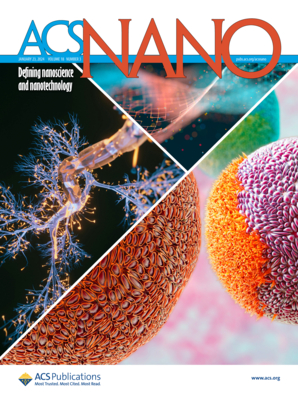IF 15.8
1区 材料科学
Q1 CHEMISTRY, MULTIDISCIPLINARY
引用次数: 0
摘要
凝胶聚合物电解质具有出色的界面兼容性和高离子电导率,这归功于高偶极矩溶剂的加入。然而,与聚合物相比,这些溶剂会优先吸附在阳极上,分解成富含有机物的层,从而导致锂离子传输动力学缓慢。此外,溶剂主导溶解结构,加剧了不稳定界面层的形成。本文提出了一种涉及高偶极矩单体的双屏蔽溶剂策略,以减轻原位胶凝聚合物电解质中的不良界面效应。高偶极矩单体(烯丙基硫脲和 1,1,1,3,3,3-六氟异丙丙烯酸酯)表现出更强的静电吸附性,取代了吸附在锂金属上的溶剂。此外,高偶极矩单体与溶剂之间强大的偶极-偶极相互作用抑制了溶剂与锂离子的配位,从而形成了以阴离子为主的溶解结构。这种策略使功能性单体和更多阴离子能够协同形成富含 LiF 和 Li2S 的稳定界面钝化层。因此,对称锂电池可在 0.25 mA cm-2 的电流密度下稳定运行 5000 小时,而 LiFePO4||Li 电池在 2 C 下循环 2000 次后仍能保持 97% 的容量保持率。这项研究将偶极矩特性融入凝胶电解质的设计中,为解决锂金属电池的界面难题提供了一种前景广阔的策略。本文章由计算机程序翻译,如有差异,请以英文原文为准。

Dual-Shielding Solvent Strategy of High Dipole-Moment Monomers for Stabilizing Gel Polymer-Based Lithium Metal Batteries
Gel polymer electrolytes exhibit excellent interfacial compatibility and high ionic conductivity attributed to the incorporation of high dipole-moment solvents. However, these solvents preferentially adsorb onto the anode compared to the polymer, decomposing into an organic-rich layer with sluggish Li-ion transport kinetics. Furthermore, the solvents dominate the solvation structure, intensifying the formation of unstable interfacial layers. Herein, a dual-shielding solvent strategy involving higher dipole-moment monomers is proposed to mitigate the undesirable interfacial effects in in situ gelled polymer electrolytes. High dipole-moment monomers (allylthiourea and 1,1,1,3,3,3-hexafluoroisopropyl acrylate) exhibit enhanced electrostatic adsorption, displacing solvents adsorbed onto the lithium metal. Moreover, the robust dipole–dipole interactions between high dipole-moment monomers and solvents inhibit the coordination of solvents with Li-ions, resulting in anion-dominated solvation structures. This strategy enables the functional monomers and more anions to synergistically form a stable interfacial passivation layer rich in LiF and Li2S. Consequently, the symmetric lithium battery can operate stably for 5000 h at a current density of 0.25 mA cm–2, and the LiFePO4||Li battery maintains a 97% capacity retention rate after 2000 cycles at 2 C. This work integrates dipole-moment properties into the design of gel electrolytes, offering a promising strategy for addressing interfacial challenges in lithium metal batteries.
求助全文
通过发布文献求助,成功后即可免费获取论文全文。
去求助
来源期刊

ACS Nano
工程技术-材料科学:综合
CiteScore
26.00
自引率
4.10%
发文量
1627
审稿时长
1.7 months
期刊介绍:
ACS Nano, published monthly, serves as an international forum for comprehensive articles on nanoscience and nanotechnology research at the intersections of chemistry, biology, materials science, physics, and engineering. The journal fosters communication among scientists in these communities, facilitating collaboration, new research opportunities, and advancements through discoveries. ACS Nano covers synthesis, assembly, characterization, theory, and simulation of nanostructures, nanobiotechnology, nanofabrication, methods and tools for nanoscience and nanotechnology, and self- and directed-assembly. Alongside original research articles, it offers thorough reviews, perspectives on cutting-edge research, and discussions envisioning the future of nanoscience and nanotechnology.
 求助内容:
求助内容: 应助结果提醒方式:
应助结果提醒方式:


